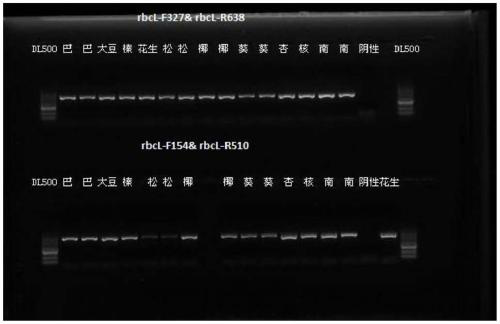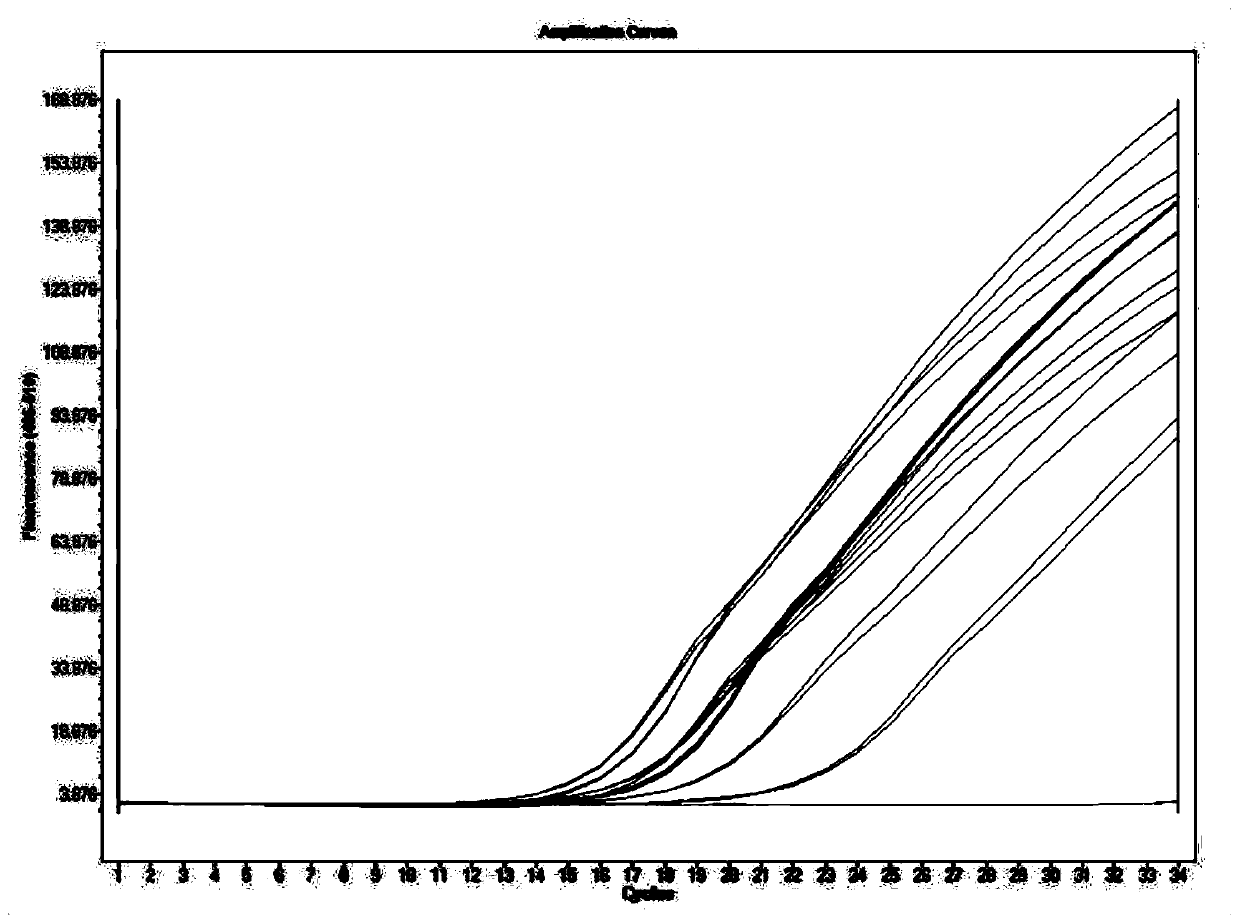Universal primer for plant-derived component identification and application of universal primer
A plant-derived, universal primer technology, applied in the field of bioengineering, can solve the problems of high detection time cost and reagent consumables cost, difficulty in simultaneous detection of multiple targets, and inability to meet risk point screening, saving time and labor. Material cost, reduced inspection work intensity, cost saving effect
- Summary
- Abstract
- Description
- Claims
- Application Information
AI Technical Summary
Problems solved by technology
Method used
Image
Examples
Embodiment 1
[0024] Example 1 Primer Design and Screening
[0025] 1. Using DNA barcoding technology to design primers
[0026] 1.1 Primer screening
[0027] Select 6 pairs of primers as alternative universal primers (see Table 1), use the 6 pairs of primers to perform PCR amplification with a Roche fluorescent quantitative PCR instrument (model: LightCycler 480), and determine the amplification of the primers to species according to the Cp value efficiency.
[0028] Table 1 6 pairs of primary screening primer sequences
[0029]
[0030] According to the DNA barcode technology, the present invention compares the 6 pairs of primers with the base sequences of various plants (walnut, soybean, peanut, hazelnut and almond) on NCBI with sequencher software, and based on the original primers, according to R=A / G, Y=C / T, M=A / C, K=G / T, S=C / G, W=A / T, H=A / C / T, B=C / G / T, V =A / C / G, D=A / G / T, N=A / C / G / T principle to carry out base merger, and the primers after merger are shown in Table 2.
[0031] ...
Embodiment 3
[0087] Embodiment 3 tests the suitability of primer with real sample
[0088] The universal primer and identification method of the present invention are used to simultaneously test 10 batches of beverages containing plant components.
[0089] Methods as below:
[0090] (1) Extract the total DNA of the food to be tested: take 1 mL of plant beverage and add 1 mL of isopropanol, mix well, place at room temperature for 5 min, centrifuge at 12500 rpm for 20 min at high speed, and discard the supernatant. The sample nucleic acid precipitation was carried out, and the operation was repeated three times in total.
[0091] Add 600uL CTAB buffer and 10ul proteinase K to the sample, shake and mix, and incubate at 56°C for 30min with shaking. Add 500ul of a mixture of phenol:chloroform:isoamyl alcohol=25:24:1, shake vigorously, and centrifuge at 12000g for 15min. Aspirate the supernatant into a new centrifuge tube, add an equal volume of isopropanol (below 0°C), shake evenly, centrifu...
PUM
 Login to View More
Login to View More Abstract
Description
Claims
Application Information
 Login to View More
Login to View More - R&D
- Intellectual Property
- Life Sciences
- Materials
- Tech Scout
- Unparalleled Data Quality
- Higher Quality Content
- 60% Fewer Hallucinations
Browse by: Latest US Patents, China's latest patents, Technical Efficacy Thesaurus, Application Domain, Technology Topic, Popular Technical Reports.
© 2025 PatSnap. All rights reserved.Legal|Privacy policy|Modern Slavery Act Transparency Statement|Sitemap|About US| Contact US: help@patsnap.com



